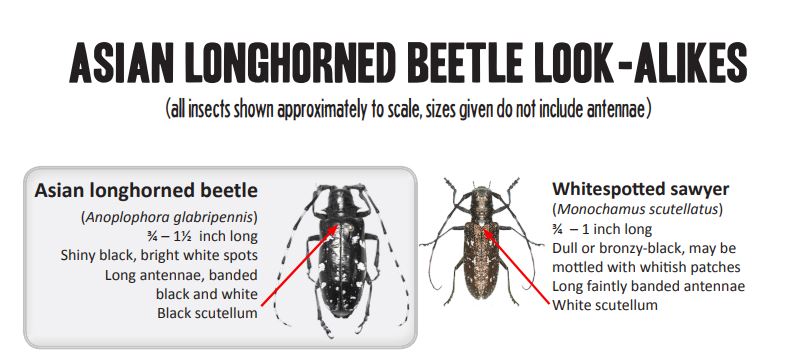Worcester, Mass., remains the nation’s biggest outbreak of tree-killing Asian Longhorn Beetles. The city and neighboring towns cut down more than 35,000 trees and established a 74-square-mile quarantine area where wood can’t be moved as part of a massive program that has largely, but not entirely, contained the problem.
ALB, unlike invasive bugs like emerald ash borer that fly every which way, doesn’t travel very far on its own. This makes it more likely that we can predict where it will show up next. But how?
Some very clever research is using circuit theory, one of the oldest branches of electrical engineering, to model population changes. Basically, the bugs are likely to move between suitable areas through narrow stretches of less-suitable vegetation, rather like like electricity flowing through a circuit: “Circuit modeling was a better predictor of spatial patterns of dispersal than least-cost dispersal modeling, especially by predicting narrow corridors that connect large habitat patches.”
You can read the technical paper, from the U.S. Forest Service’s Northern Research Station, here.


 Return to the Concord Monitor
Return to the Concord Monitor
How can you claim that Worcester is “the nation’s biggest outbreak of ALB” when our small farming village of Bethel, Ohio has now had 101,000 trees removed by the USDA since their irresponsible and devastating actions began in June 2011?